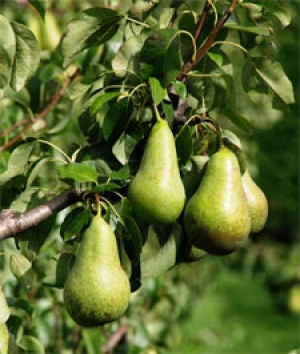Summer Fruits!
 You may have gotten a great start on your fall vegetable garden, but did you forget about fruit trees? Planting even one fruit tree is a small investment that can yield years of delicious fruit for eating and baking. Many fruits are easy to grow in Texas with minimal effort. By planting now through winter, you’ll give your fruit trees plenty of time to put on new roots before the onset of next summer’s heat.
You may have gotten a great start on your fall vegetable garden, but did you forget about fruit trees? Planting even one fruit tree is a small investment that can yield years of delicious fruit for eating and baking. Many fruits are easy to grow in Texas with minimal effort. By planting now through winter, you’ll give your fruit trees plenty of time to put on new roots before the onset of next summer’s heat.
There are many types and varieties of fruit trees that do well in our areas. Apple, pear, peach, apricot, plum, persimmon, jujube and fig trees may be planted now, and you’ll find a good selection of them at garden centers. Apple and Asian pear trees should be planted in pairs for adequate cross-pollination for ample fruit production. Peach trees are available in standard and dwarf varieties and as early and late producers. Peach trees do not require a cross-pollinator, so if you have room for only one tree, you’ll still get plenty of peaches. Mexican plums are not only beautiful ornamental native trees, but they also produce an abundance of small plums great for making jelly. ‘Celeste’, ‘Texas Everbearing’ and ‘Brown Turkey’ are excellent fig tree choices. Many of your favorite apples, including ‘Red Delicious’ and ‘Golden Delicious’, ‘Gala’, ‘Holland’, ‘Fuji’ and ‘Granny Smith’, are all well suited to parts of Texas.
Many of these fruit trees are small in stature and don’t take up a lot of space in your garden. In addition, they are fast growing, and you’ll often get your first nice harvest only two or three years from planting. This makes them excellent choices for smaller urban landscapes. It goes without mentioning that the springtime blooms are a real bonus!
The rules for planting your new fruit tree are simple: begin by digging a hole that is two times wider than your tree’s container. Plant the tree slightly higher than it was in the container. Drench the root ball with a natural root stimulator before filling the hole with the remaining native soil. Fertilization will vary depending on the type of tree you plant; use a balanced fruit-tree fertilizer three to four times per year for new trees in their first couple of years. During the third year, as the transformation to a fruit-producing tree begins, fertilize twice per year, at the beginning and end of spring. Add a top-dressing of mulch to help retain soil moisture, but take care not to pile the mulch around the base of the tree trunk. You’ll need to provide regular supplemental water to your new trees for the first couple of years to ensure success. Try using a handy tool like a “gator bag” to provide a slow-water drip if you are going to be out of town.


